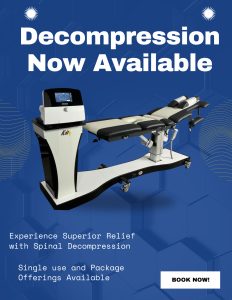Wrist pain affects people from all walks of life—from office workers typing at computers all day to parents lifting young children to seniors managing the effects of aging joints. This common complaint can significantly impact your ability to perform everyday tasks, from buttoning a shirt to opening a jar or even shaking someone’s hand.
While many people reach for over-the-counter pain relievers or wrist braces as their first line of defense, chiropractic care offers effective approaches that address the underlying causes of wrist discomfort. So, what should you know?
What Causes Wrist Pain?
The wrist is remarkably complex, containing eight small carpal bones arranged in two rows, along with numerous ligaments, tendons, and nerves passing through a very small space. This intricate design allows for the impressive range of motion and flexibility needed for fine motor tasks—but it also means many things can go wrong and cause pain.
When experiencing wrist pain, most people naturally focus on the wrist itself. However, chiropractors take a more comprehensive view, recognizing that wrist problems often originate elsewhere in the body.
The nerves that control sensation and movement in your hands and wrists exit from your spine in the neck region (cervical spine). If the vertebrae in your neck become misaligned or restricted in movement, they can irritate these nerves, causing symptoms that manifest in your wrists even though the primary issue is in your spine.
Similarly, problems in your shoulder, elbow, or forearm can alter how you use your wrist, creating compensation patterns that lead to strain and pain. A chiropractor evaluates this entire kinetic chain—not just the painful area—to identify all contributing factors.
At the end of the day, your wrist doesn’t operate in isolation. It’s part of an interconnected system where dysfunction in one area can create problems elsewhere. By addressing these connections, chiropractic care offers a more complete solution than treatments focused solely on the symptoms in the wrist itself.
Chiropractic Techniques for Wrist Pain Relief
Chiropractors employ several specialized techniques to address wrist pain, tailored to each patient’s specific condition and needs.
Joint manipulation or adjustments to the small carpal bones of the wrist can help restore proper alignment and movement. These bones often become restricted or slightly misaligned, creating friction, inflammation, and pain. Through precise, gentle adjustments, chiropractors help normalize the position and motion of these bones, often providing immediate improvement in comfort and mobility.
A thorough chiropractor will also assess and adjust other areas that may be contributing to your wrist pain, including the elbow, shoulder, and cervical spine. By ensuring proper function throughout this entire chain, they help distribute forces more evenly and reduce strain on your wrist.
Beyond adjustments, chiropractors may use soft tissue techniques to address tension in the muscles and fascia of the forearm that can pull on the wrist. These muscles control many wrist and hand movements, and when they become tight or develop adhesions, they can restrict wrist motion and cause pain.
Instrument-assisted soft tissue mobilization uses specialized tools to break down scar tissue and adhesions in the muscles and fascia around the wrist. This technique helps restore normal tissue mobility and function, reducing pain and improving range of motion.
Preventing Wrist Pain Recurrence
While chiropractic treatment effectively addresses current wrist pain, preventing future episodes requires attention to daily habits and environmental factors. Your chiropractor can provide valuable guidance on:
Workstation Ergonomics
How you position your body during repetitive tasks significantly impacts wrist health. Small adjustments to your workspace can make a substantial difference, such as:
- Keyboard and mouse placement should allow your wrists to remain in a neutral position, neither flexed up nor bent down.
- Wrists should hover just above the keyboard rather than resting on it or on a wrist rest during typing.
- Your chair height should position your forearms parallel to the floor when typing.
- Monitor height should allow you to look straight ahead rather than down, which affects neck position and, subsequently, nerve function to the wrists.
Movement and Breaks
Even with perfect ergonomics, staying in one position for extended periods strains your body. Regular movement helps, so consider:
- Taking short breaks every 30 minutes to move and stretch your wrists.
- Simple wrist stretches throughout the day to maintain flexibility.
- Varying tasks when possible to change wrist positions and movements.
- Maintaining good overall posture, as slumping shoulders affect the entire arm chain.
Sleeping Positions
How you sleep can either help or hinder wrist healing. Avoid sleeping with wrists bent sharply in any direction. If in pain, you may also want to consider a night splint for certain conditions to maintain a neutral wrist position
All in all, be mindful of arm positioning—avoid sleeping with arms overhead or with pressure on the wrists
At Awaken Chiropractic, your Highlands Ranch and Parker chiropractors are ready to help! Don’t let wrist pain hold you back from the activities you enjoy or the tasks you need to accomplish. Book your appointment with our compassionate and expert team today!







